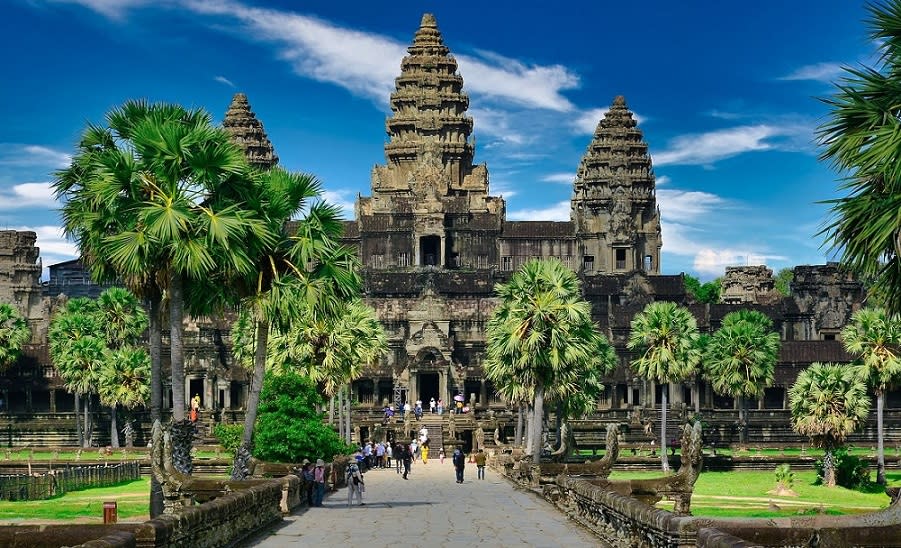Safeguarding of intangible cultural heritage

Human life is evolutionary, marked by changes in man’s reactions to and usage of the environment, his behavioural pattern in communal living and interaction and man-made creations to adorn his life and glorify his beliefs.
This evolutionary process advances his knowledge in fathoming the natural phenomena that impact his existence and the development of technology to utilise natural resources for his existence.
Man organises and orders his communal and personal existence by creating norms and values that govern collective and individual engagements that prioritise the individuals and safeguard communal living.
In time, these tenets that govern their lives become traditions, mores and legends that guide the community in harmonious living and internecine engagement.
Among the adornments of his life are his aesthetic, functional and ritualistic practices and creations that are continuously evolving because of his creative and innovative faculties. But in time, this intangible heritage could be lost and buried by innovations and technological developments, rendering them obsolete.
Unlike the tangible heritage, such as archaeological structures and artefacts that could be unearthed and their structural makeup and functions discerned as in the case of Acropolis, Borobudur, Angkor Wat, and Machu Pichu that are testimony to once great civilisations, the intangible heritage such as songs, music, dances, rituals, skills of fashioning artefacts, that celebrate these civilisations are lost and irrecoverable because if not passed down from generation to generation.
Others were demolished through wars and genocide, as is happening to the intangible heritage of the Palestinian people.
Such annihilation of intangible cultural heritage occurred during the Mao Zedong communist cultural revolution, the Cambodian Pol Pot killing fields, and the Vietnam and Bosnian wars that decimated the traditions, mores, and lore of the respective people at worst or altered or modified them at best.
Colonisation through peaceful means or military conquest has negatively impacted indigenous heritage.
The American Indian culture was wiped out by the European immigrants, as is currently being done by Jewish settlers who murder innocent Palestinians, evict them from their homes and rob their lands.
There were five to 10 million Red Indians in North America, but the genocide by the European settlers almost wiped out the Red Indians and their culture.
In 1492, there were 62 million indigenous inhabitants in South, Central and North America, but European settlers exterminated 56 million or 90 per cent of the native population in the Americas, erasing the rich and varied cultural heritage of the indigenous people.
Likewise, the fate of the Australian aborigines, whom the Australian government has denied adequate representation, the Muslim Rohingyas, and to a certain extent, the Malaysian aborigines, may suffer a similar fate.
These indigenous people were cruelly exterminated and decimated, destroying their culture and replacing it with Western norms, values and cultural expressions.
Colonisation, wars, genocide, and the evolution of technology have adversely impacted the traditional indigenous tangible and intangible cultural heritage, with many lost forever.
To safeguard, preserve and conserve the still-living traditions of intangible cultural heritage, the United Nations, Educational, Scientific and Cultural Organisation (Unesco) agreed in 2003 to an international agreement to promote and safeguard the diverse facets of intangible heritage worldwide.
The 2003 Convention for the Safeguarding of Intangible Cultural Heritage defines intangible culture as rituals, expressions, traditions, practices, knowledge and skills transmitted from generation to generation.
These cultural expressions are categorised into oral traditions and expressions, performing arts, social practices, rituals and festive events and knowledge, the practices concerning nature and universe and traditional craftsmanship.
Since then, numerous intangible cultural items from all over the world have been inscribed to safeguard them as living heritage, among them Malaysia’s Makyong dance theatre, which was inscribed in 2005 as “A masterpiece of the Oral and Intangible Heritage of Humanity”.
This year alone, more than 56 intangible items were inscribed, safeguarding them as living traditions of humanity. Among them is Mek Mulung, another endangered dance theatre, inscribed on Dec 5, 2023, at the Unesco Plenary Meeting and Conference in Kasane, Botswana, Africa.
Others include Syrian traditional glassblowing, Turkey’s traditional knowledge, methods and practices concerning olive cultivation, Thailand’s Songkran New Year Festival, Turkmenistan’s Art of Akhal-Teke horse breeding and traditions of horse decorations, Art of illumination (khat) in Azerbaijan, Iran, Tajikistan, Turkey and Uzbekistan, Knowledge, craft, and skills of handmade glass production in Czechia, Finland, France, Germany, Hungary, and Spain among others.
This intangible cultural heritage needs safeguarding as it embodies the memories of skills, practices, norms, values and sensitivities that describe the indigenous communities for the benefit of future generations.
The post Safeguarding of intangible cultural heritage appeared first on Twentytwo13.


